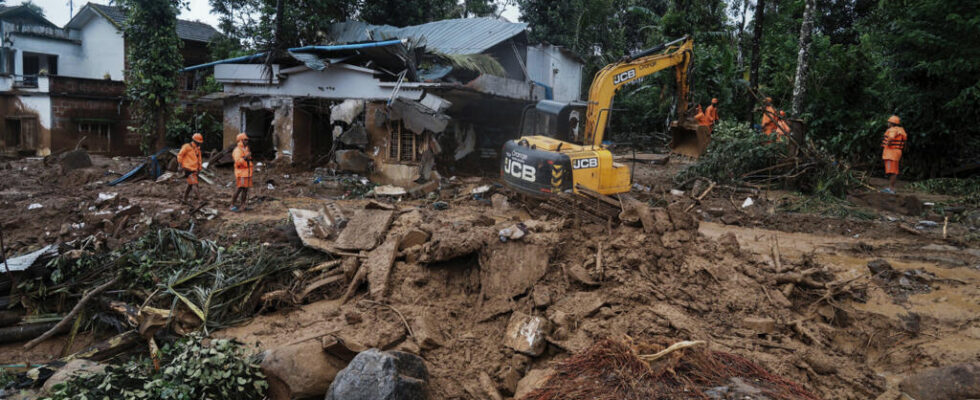At least 350 dead and another hundred missing in Wayanad, India. The mountainous region was hit by landslides and floods this week due to the monsoon. Added to the emotion are now questions about the human and climatic causes of this disaster.
1 min
With our special correspondent in Cochin, Côme Bastin
Keralans are closely following the rescue efforts that have found more than 1,000 people and are organizing fundraisers in solidarity with the people of Wayanad. Experts, like Gireesh Gopinath, a climate specialist at the University of Kerala, are trying to understand the tragedy.
” Kerala’s climate is changing, with the number of rainy days reduced from 120 to 80 per year. However, the rains are more intense, increasing the risk of landslides.he specifies. Wayanad is a plateau around which the mountains have been cut vertically and infrastructure built. All this concentrates the floods and creates a time bomb. »
Adapting to climate change
War has been declared between the government of Prime Minister Narendra Modi and the communist opposition-ruled state of Kerala over who planned this disaster.
“ There are certain areas where we need to stop building. But often the locals themselves are against it, because it would lower the value of their land. We also need to ban drilling and mining, while at the same time, we are lacking building materials. “, explains MB Rajesh, Minister of Village Councils, to RFI
A delicate balance between development and adaptation to climate change remains to be found across India.
Read alsoIndia: Landslides kill dozens, injure hundreds in southern India
